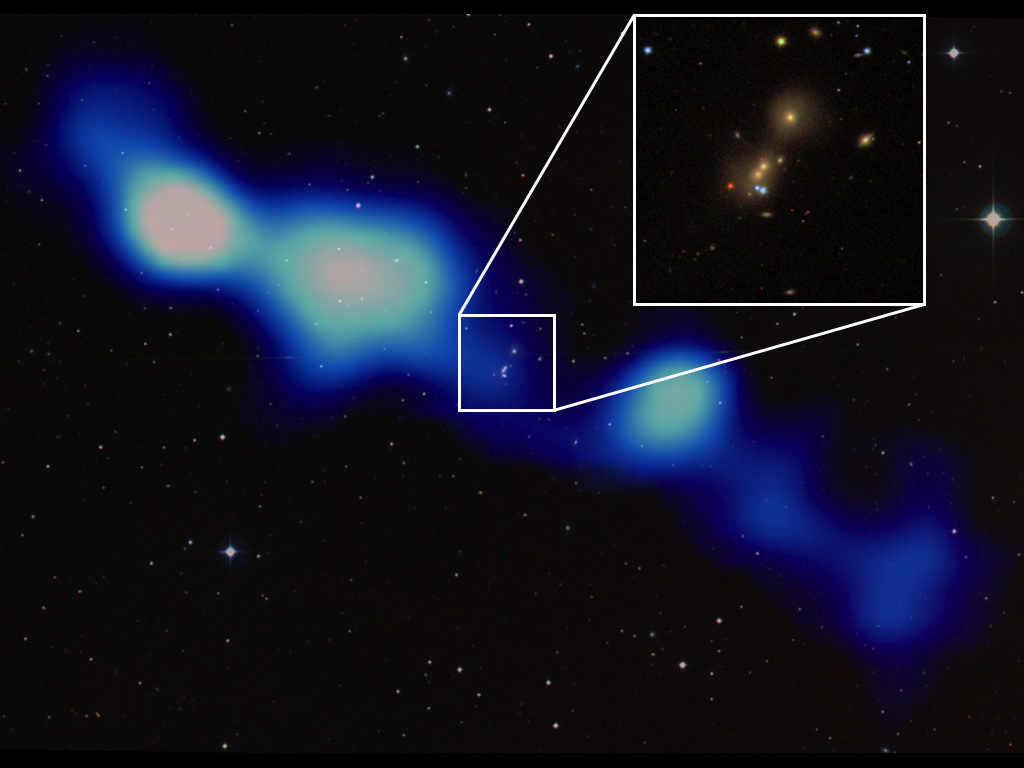Our Universe is full of surprises. Sometimes those surprises come in packages so overwhelmingly huge that it’s almost impossible for us to comprehend the size. Thus is the case of a newly discovered “giant galaxy”. It’s a galaxy which extends millions of light years across intergalactic space, covering an area as much as a half degree of sky. It’s a new class of monster – one called a Giant Radio Galaxy.
Thanks to the work of an international team of astronomers made up of about fifty members from various institutes and led by ASTRON astronomer, Dr. George Heald, there’s a new discovery which can be credited to the powerful International LOFAR Telescope (ILT). During a perpetual all-sky radio survey – the Multi-frequency Snapshot Sky Survey (MSSS) – the team captured some images which revealed a new radio source. This wasn’t just a weak signal that showed a new blotch. It was a source the size of the full Moon projected on the sky! The huge new radio emission appears to have originated up to hundreds of million of years ago from a single member of a interacting triple galaxy system and spread itself across a vast expanse of space.
Cataloged as UGC 09555, the parent galaxy system is located some 750 million light years from our solar system. Its central galaxy had been studied before and was known to have a flat radio spectrum – a signature of giant radio galaxies. Astronomers speculate when the trio interacted, material was released – spreading out over millions of light years and releasing very low radio frequencies. It’s a source that’s either very powerful, or it’s very old.
Enter LOFAR and the MSSS Survey…
As part of a well orchestrated attempt to image the expanse of the northern night sky at frequencies between 30 and 150 MHz, the radio researchers have taken a initial “shallow scan” image set. This new survey will allow astronomers to fashion an all-sky model which will eventually assist with much deeper observations. Thanks to LOFAR’s extreme sensitivity, ability to operate at low frequencies and suitability to observe old sources, the survey was able to reveal this gargantuan galaxy. Picture its size again in your mind. This Giant Radio Galaxy covers as much sky as the Moon, yet it’s 750 million light years away! As the MSSS Survey continues to scan the skies, who knows what may yet be discovered?
With capabilities as sensitive as some of the world’s greatest radio telescopes, such as the Very Large Array (VLA) in the USA, ASTRON’s Westerbork Synthesis Radio Telescope (WSRT), and the Giant Metrewave Radio Telescope (GMRT) in India, LOFAR will take discoveries such as Giant Radio Galaxies to the next level. It will reveal objects missed by previous surveys and the broad bandwidth coverage may show us even more cosmic wonders.
Really big ones…
Original News Source: Netherlands Institute for Radio Astronomy News Release.

